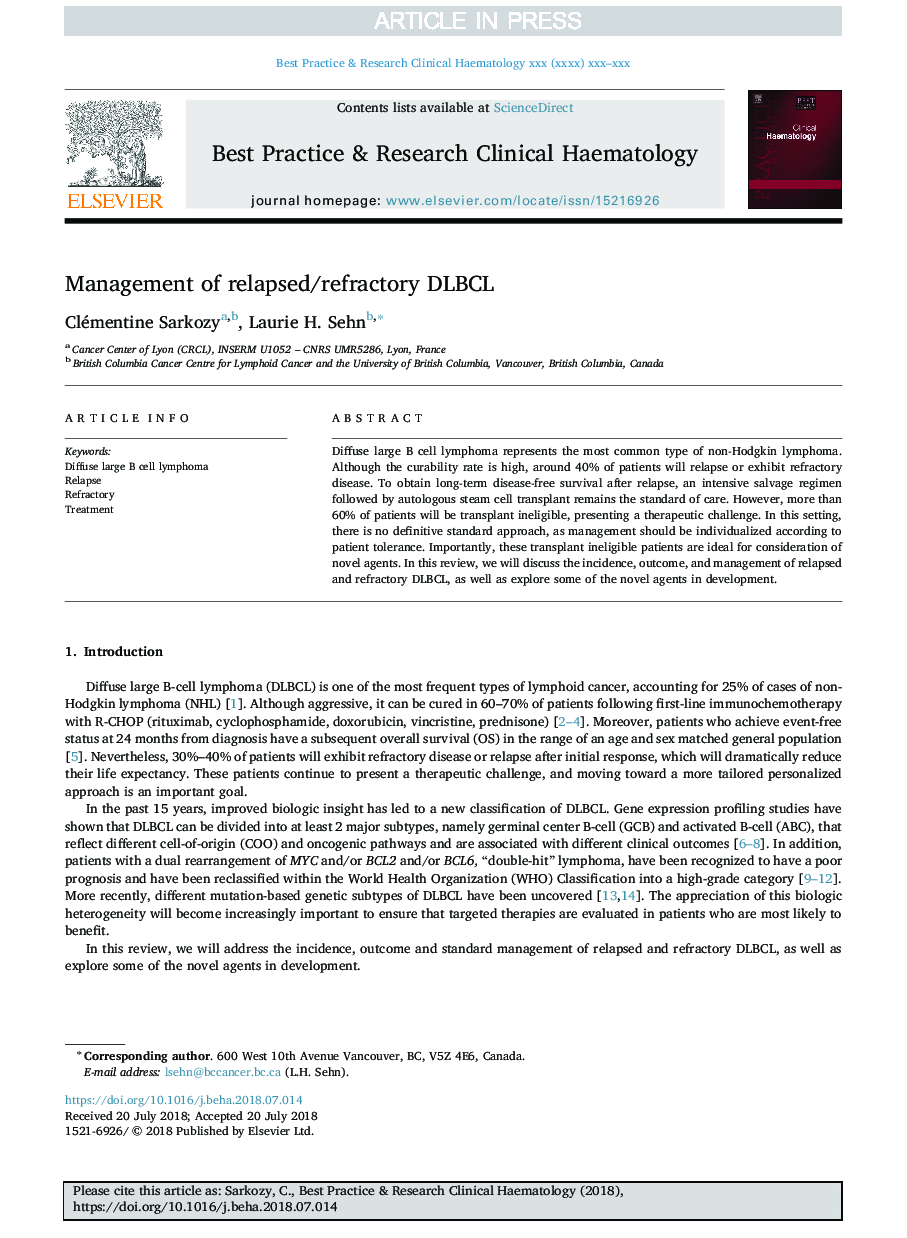| Article ID | Journal | Published Year | Pages | File Type |
|---|---|---|---|---|
| 10157424 | Best Practice & Research Clinical Haematology | 2018 | 8 Pages |
Abstract
Diffuse large B cell lymphoma represents the most common type of non-Hodgkin lymphoma. Although the curability rate is high, around 40% of patients will relapse or exhibit refractory disease. To obtain long-term disease-free survival after relapse, an intensive salvage regimen followed by autologous steam cell transplant remains the standard of care. However, more than 60% of patients will be transplant ineligible, presenting a therapeutic challenge. In this setting, there is no definitive standard approach, as management should be individualized according to patient tolerance. Importantly, these transplant ineligible patients are ideal for consideration of novel agents. In this review, we will discuss the incidence, outcome, and management of relapsed and refractory DLBCL, as well as explore some of the novel agents in development.
Related Topics
Life Sciences
Biochemistry, Genetics and Molecular Biology
Cancer Research
Authors
Clémentine Sarkozy, Laurie H. Sehn,
